













Toxins are virtually everywhere and may be responsible for a number of challenges — everything from fatigue to joint discomfort. Give your body the detoxification support* it needs with Standard Process® supplements. They’re driven by science, packed with high-quality ingredients, and formulated to help you revitalize your wellness.

SP DETOX BALANCE™
Contains ingredients from the Standard Process certified organic farm. Supports whole body detoxification and helps your liver in the processing and removal of toxins from your body.*
GI ADSORB™

Helps with the body’s removal of naturally occurring toxins by supporting a healthy GI barrier and normal elimination.* Find a health care professional near you who offers Standard Process® products at standardprocess.com/Find

standardprocess.com
*These statements have not been evaluated by the Food and Drug Administration. These products are not intended to diagnose, treat, cure, or prevent any disease.
©2022 Standard Process Inc. All rights reserved. LN02244 08/22




PUBLISHER
Tracy Patterson, BSc, MES
DESIGN & PRODUCTION Vegetorium, LLC
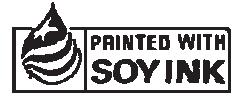
COPY EDITOR Sara Gurgen
DIGITAL PLATFORMS Hass Solutions Locable
Natural Awakenings – Phoenix 17470 N Pacesetter Way Scottsdale, AZ 85255 Tracy@NaturalAZ.com NaturalAZ.com
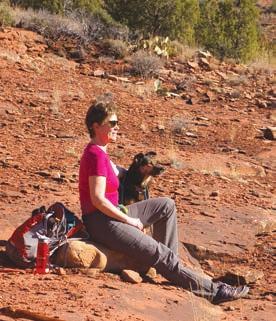
TEAM

CEO/Founder Sharon Bruckman
COO/Franchise Sales Joe Dunne Layout & Design Gabrielle W-Perillo Financial Manager Yolanda Shebert Asst. Director of Ops Heather Gibbs

Digital Content Director Rachael Oppy National Advertising Lisa Doyle-Mitchell
Administrative Assistant Kristy Mayer
© 2022 by Natural Awakenings. All rights reserved. Although some parts of this publication may be reproduced and reprinted, we require that prior permission be obtained in writing.
Natural Awakenings is a free publication distributed locally and is supported by our advertisers. Please contact us to find a location near you.
We do not necessarily endorse the views expressed in the articles and advertisements, nor are we responsible for the products and services advertised. Check with a healthcare professional regarding the appropriate use of any treatment.
This month’s feature article, on page 16, reminded me of some of the conversations I’ve had lately. I’ve found that some people are completely overwhelmed and afraid of what’s going on in the world. Stories of national and international significance become a primary source of worry, and some of these people are rendered incapable of functioning well in their daily lives because of the anxiety that comes with things that are out of their control. And although these stories may (or may not) be true, they have taken the weight of the world on their shoulders.
Although I’ve found myself falling down this rabbit hole from time to time (I mean, how can any of us totally be immune to the condition of world affairs?), I really try to keep in mind the Serenity Prayer, “God, grant me the serenity to accept the things I cannot change, the courage to change the things I can, and the wisdom to know the difference.”
Worrying about things, after all, does not make them go away or contribute to the resolu tion of anything. And the more we take in information, primarily through the news, the more we feed the tendency to worry about things over which we have no control.
I try to stay away from the news, other than having a basic understanding of what is going on. I may not be a politician, activist or global economist, but I can do something—I can basically try to live the best life possible each and every day at the local level. I can do the right thing (which often comes from a gut feeling) when it comes to things I can actu ally do something about. I can be a good citizen. I can have a grateful attitude about my life.
If we all try to live our best life by doing beneficial things that we do have control over, it may go a long way to straightening out our tendency to worry and live with anxiety over the state of our world’s affairs.

Please note that all deadlines (advertising and editorial) are the 10th of the month prior to the edition being published. For example, December 10 is the deadline for all January edition submissions.

A new study supports the public health importance of staying away from ultra-pro cessed foods, finding a significant associa tion with colorectal cancer in men The study, led by Tufts University and pub lished in August in The BMJ, looked at the diets of 46,341 men and 159,907 women every four years for 24 to 28 years using food frequency questionnaires.
These ready-to-eat or ready-to-heat commercial formula tions comprised of little or no whole foods currently contribute 57 percent of the total daily calories consumed by American adults—a rate which has been continuously rising over the last two decades.
Commonly containing high levels of added sugar, unhealthy fats and refined starch, ultra-processed foods negatively im pact gut microbiota and contribute to increased risks of weight gain and obesity. Most of these convenience foods are low in nutrients and bioactive compounds; contain food additives, colors and emulsifiers; and can be potentially carcinogenic when meats are processed with sodium nitrates and heat treatments or when the packaging leaches its harmful compo nents (like bisphenol A) into the food.
A second recent study in Italy involving 22,895 adults over the age of 35 compared the role of nutrient-poor foods with ultra-processed foods in the development of chronic disease and early death. Researchers found that both types of foods increased the risk of an early death, especially from cardio vascular diseases. When researchers compared the two types of food to see which contributed the most to the risk of an early death, ultra-processed foods were associated with poor health outcomes independently of their low nutritional compo sition, but not the other way around.

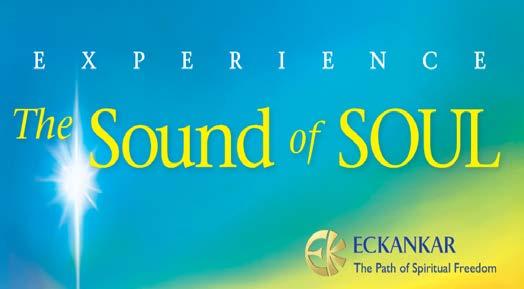

Getting lost in our thoughts may im prove problem solving, increase creativity, en hance imagination and provide a better sense of self-worth. But in the digital age, with im mediate and satisfying input at a finger’s tap, it is possible to be “soli tude deprived,” says Cal Newport, a computer science professor at Georgetown University and author of Digital Minimalism.

In a recent study in the Journal of Experimental Psychol ogy, psychologists asked a group of more than 250 university students to sit and wait in a quiet room without doing anything. Researchers found that the students under-appreciated their enjoyment and engagement of “just thinking” and instead favored technology-driven distractions like internet newschecking. The results suggest an inherent difficulty in accu rately assessing how engaging just thinking can be, and may explain why people prefer keeping themselves busy rather than taking a moment for reflection and imagination in their daily lives.
The idea that depres sion is caused by a chemical imbalance specifically, a serotonin deficiency has been popular and influential since the 1960s, leading to the wide use of anti depressants. A recent multi-institution study led by the University of Reading, in the UK, and published in Mo lecular Psychiatry has debunked this theory. The researchers did a systematic review of studies on the topic and found no convincing evidence of an association between serotonin and depression, and no support for the hypothesis that depres sion is caused by lowered serotonin activity or concentrations. The serotonin theory of depression has historically provided convincing justification for the use of antidepressants and may discourage people from discontinuing treatment, potentially leading to lifelong dependence on such drugs.
The Intergovernmental Panel on Cli mate Change predicts that average global wind speeds could drop by up to 10 per cent by 2100. Paul Williams, a professor of atmospheric science at the University of Reading, in England, says, “Why do we have wind at all on the planet? It’s because of uneven temperatures; very cold at the poles and warm at the tropics. That temperature difference drives the winds, and that temperature difference is weaken ing. The Arctic is warming faster than the tropics.” A slowing in surface winds could disrupt the Gulf Stream, translating to widespread drought and more intense winter storms.

A study published in Nature shows the Arctic has been warm ing four times faster than the rest of the world since 1979, much faster than scientists estimated. An increase in the num ber and size of urban buildings that act as a drag on winds is another contributing factor. While temperature data goes back thousands of years, climate wind change studies only have 70 years of data to work with. Substantial annual fluctuations make long-term trends difficult to detect, and conclusions leave room for doubt. Yet Gisela Winckler, at the Columbia University Lamont Doherty Earth Observatory, writes, “The winds [will be] weaker and stiller.”


At the University of Birmingham in the UK and Ber gen, Norway, scientists have shown that atmo spheric carbon dioxide pumped into a mature forest at levels predicted to be the norm by 2050 will cause trees to produce more and longer roots, thus absorb ing and storing more carbon. Researcher Angeliki Kourmouli says, “We usually take soil for granted, but it forms a crucial part of many ecosystems and plays a significant role in carbon storage.”
The study team gathered thousands of images of tiny tree roots assembled over two years at the Birmingham Institute of Forest Research Free-Air CO2 Enrichment. The images were used to build a mathematical picture of the birth, growth and death of roots in an oak forest. Some images were taken of roots in situ using a high-resolution camera sent under the forest floor in a set of transparent tubes, and others came from soil cores.
Professor Iain Johnston, who led the study, says, “It’s obviously hard to view these processes going on beneath the ground. But a combination of innovative engineering and careful field and lab work from our team have helped us shed new light on this behavior and on how confident we can be in our findings.”

As electric vehicle (EV) owners learn how to install home chargers, find public charging stations and avoid range anxiety, the demand for power could burden the electric grid in western states at peak times by up to 25 percent if most charging is done at night, according to one Stanford University study. Unlike filling a car with gasoline, charging an electric car takes time. The fastest chargers on the market today can reach 80 percent in 20 to 30 minutes, but many are slower, taking between two and 22 hours to completion. Thus, around 80 percent of EV charging occurs overnight at home when the driver doesn’t need the car.
That charging pattern challenges the way electricity is generated and distributed. The largest need overall is in the evening from approximately 5 to 9 p.m. Photovol taic panels produce energy during the middle of the day, so the highest electricity demand comes when solar is dormant.
“Once 30 or 40 percent of cars are EVs, it’s going to start significantly impacting what we do with the grid,” says Ram Rajagopal, a professor of civil and environmental engineering at Stanford University and one of the study’s authors. One solution is for more EV owners to shift to daytime charging at work or public charging stations.


 by Joya Sosnowski
by Joya Sosnowski
Have you ever walked into a room and picked up a bad vibe, or been around someone with bad vibes— or around someone with good vibes? The energy is felt. This is vibrational energy at work. We are all both senders and receivers of energy.

Sound is one of the most powerful meth ods to work with the human energy field. Sound is pure vibrational energy. Sound also has the power to carry intention on its waves. Sound impacts the human field and changes people’s vibrational being. When a person changes who they are being, everything around them begins to change too. Sound healing is vibrational work, and it’s like stepping into the still pond of a person’s being. Just as the silt on the bottom of a pond gets stirred, so too does what has been buried in the unconscious come to the surface. It is now conscious, or brought to the awareness, so that it can be healed, cleared and released.
Consciousness means to become aware of the consequences of every choice we make. We can no longer keep making the choices we were making when we are aware of the consequences of those choices. Transforma tion happens when we stop doing what we were doing before and begin to live from a new level of consciousness. We literally raise our vibration. Sounding with one’s own voice is the most powerful tool to get you there.
How can your raised vibration impact others? In physics, there is a phenom enon known as the 100th monkey effect. Basically, it means that when one monkey makes a discovery, such as a different way to peel a banana, this information gets imprinted onto the quantum field and transfers to other monkeys who have never been around the original monkey. They, too, begin peeling their banana the same way. This is how the same ideas can land on people all at once, all around the world
who are not physically connected. This is how we can become a beacon of good vibes and help imprint the field consciousness with higher vibrations.
Some of the latest findings in quantum science tell us that the zero-point field we all live in is conscious. Just as fish aren’t aware that they live and breathe and swim in water, humans are unaware that we live and breathe in a field that is very much conscious, energized and full of messages. It carries ideas, information and energetic vibrations. This is why we all can sense the vibes of people and places through our own inner antennae system.
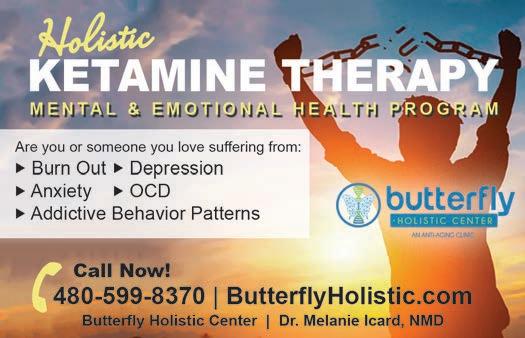
Science tells us that everything is energy. Energy is defined as the ability to be active. If there is no energy, there is no action. In this field of activity, everything is vibrating, and if anything is vibrating, that means that it carries a frequency. Frequency is the word for the rate at which something vibrates. Everything that vibrates makes a sound—most of which is beyond the range of human hearing, which is only between 20 to 20,000 Hz. But just because we can’t hear the frequencies of vibration, doesn’t mean they don’t influence us. We are music, and we are always broadcasting into the field who we are, how we see, what we perceive, and what we project—and what we attract back to us comes through this information. We really do create our own reality. Dr. Wayne Dyer so wisely said, “When you change the way you look at things, the things you look at change.” This is a vibrational consciousness shift.
S o what would happen if a large group of people got together with the intention to send love, peace and joy out into the field? Can this have an impact on the field to effortlessly raise the vibration of others, as their energy fields pick up this informa tion from the field? There is an event that is going to measure this very idea. Vibe Raiser is happening on January 22 in Mesa at the historic Sunkist Warehouse from 1 to 4 p.m. This event is in col laboration with HeartMath Institute to measure the coherence of
the field of the attendees. The event will also be on the HeartMath app so that people from around the world can participate at the same time. Together with the Global Consciousness Project, they will be looking at real-time data to see how a large group of humans coming together in vibration and intention can impact the field on a global scale.
The event will begin with the group coming into heart coher ence with each other, and together everyone will “tone” one note, singing AHH together while holding the intentions of love, joy and peace for all humanity out into the field. The experience of singing this way together is incredibly heart touching and power ful to the participants. This experience alone can permanently transform someone’s vibration on the spot. There really is noth ing like it, and like all wonderful things, it must be experienced to truly be understood. Following the intention toning, the power duo MaMuse will perform a beautiful audience-participation concert, where the audience will all sing and dance together, keeping our heart coherence field active. And then DJ Taz Rashid, known for his conscious dance music on the yoga festival circuit worldwide, will be playing conscious dance music to cre ate the space for a conscious dance party.
Think conscious Coachella. This event is nonalcoholic and substance-free. The human brain is capable of creating the best feel-good neuro-cocktails through vibration, music and dance. This event needs all the high-vibe people to come out and hold this vibration to help impact the field with more love, more peace and more joy, so that people everywhere will feel more uplifted. It will be a joyful Sunday funday, with a lasting impact, that according to HeartMath, will be felt for days.
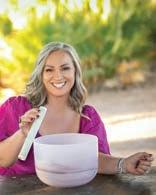
Rev. Joya Sosnowski, M.Msc, MMT, is the sound healer and spiritual science mastery teacher at Vibologie. For more information about her or Vibologie, visit Vibologie.com. For more information about the event or to purchase tickets, visit VibeRaiser.com. See ad, page 4.
Advertorial
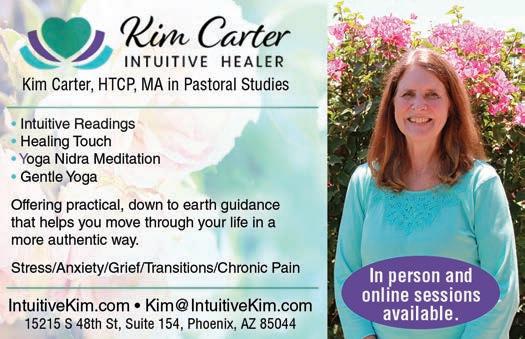
Sound healing is vibrational work, and it’s like stepping into the still pond of a person’s being.
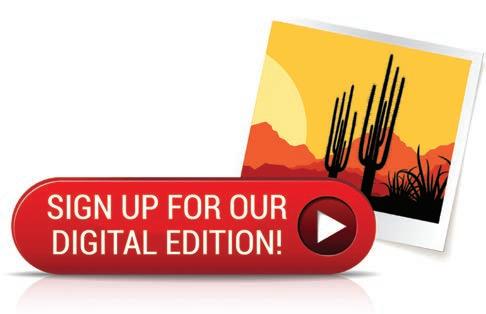






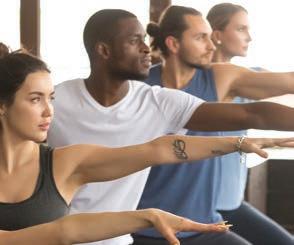



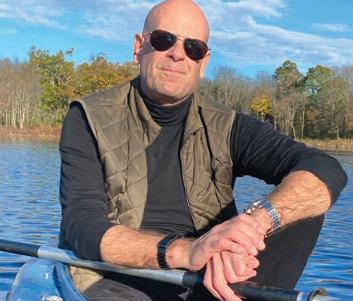
2’-fucosyllactose (2’-FL) is a human milk oli gosaccharide present in breast milk. It is able to evade digestive enzymes until it reaches the lower gastrointestinal (GI) tract where it acts as a prebiotic, feeding bacteria in the gut. 2’-FL is uniquely available to Bifidobacteria, a group of good bacteria in the gut, which helps their population flourish and benefits both gut and immune health. Bifidobacteria are health-promoting bacteria, and maintain ing adequate levels is important because de creased levels of Bifidobacteria are commonly seen in GI conditions as well as metabolic diseases. Supporting growth of beneficial Bifi dobacteria can also help decrease the levels of pathogenic bacteria, including Clostridioi des difficile, which can lead to severe infec tion. Bifidobacteria strains have the ability to utilize 2’-FL by either direct uptake or by breaking 2’-FL apart outside the cell, lib erating its constituents for easy microbial feeding. Bifidobacteria colonization in the gut is aided by the presence of 2’-FL.
Babies are born with a very underdevel oped gut microbiome, but the human milk oligosaccharides in breast milk, including 2’-FL, help promote the development of a rich gut microbiome. Breastfeeding in infants has been strongly associated with an increase in many Bifidobacteria species, due in large part to the high content of 2’-FL. It also is associated with reduced risk of de veloping lower respiratory tract infections later, as well as other benefits, including healthy brain development and cognition. For infants that are not breastfed, formula enriched with 2’-FL and other human milk oligosaccharides supports the development of the intestinal immune system and gut barrier function.
The benefits of 2’-FL extend beyond infancy, promoting the growth of beneficial microbes throughout adulthood and in individuals with GI conditions. In healthy adults, supplementation with 2’-FL was
able to positively change the composition of the gut microbiome, increasing the levels of Bifidobacteria. In adults with chronic GI conditions, consumption of 2’-FL resulted in improvements in symptoms specific to the intestines as well as more broad symp toms, including quality of life.
2’-FL is a naturally occurring compound in breast milk that jump-starts a baby’s gut microbiome and can help support the gut and resolve gut-related issues throughout life. Supplementation with 2’-FL can help balance the gut microbiome by increasing Bifidobacteria populations, as well as feed beneficial Bifidobacteria during times of acute GI stress.

Keri Barron, Ph.D., is the scientific writer for Standard Process. For more information, visit WholisticMatters.com. See ad, page 6.

With all the chaos occurring in the world today, it is challenging to remain centered and not feel over whelmed. Every shocking headline seems to pull the proverbial rug out from under us. Thought leader Laureen Golden explains the dilemma this way: “Psychologically, we were raised, educated and socialized in a world that no longer really exists. We have a new world that we must navigate, and we need a new psychology, a whole new way of being for that world. Reducing, compartmentalizing, separating things in order to understand them no longer works for us. It’s going to take work to get out of this paradigm.”
Drawing from her background in education and social work, Golden ponders, “How does that new psychology develop when all our institutions charged with cultivating consciousness—schools, families, religious institutions and organizations—are set in the 19th and 20th centuries? Since learning is how we go from one paradigm to another, where do we go to learn the skills and the structures we need to be successful in such a complex world? We can’t do it individually. We must learn in collectives.”
The paradigm shift envisioned by Golden offers an opportunity for us to access innovative methods of learning, discovery and connection, such as sociocracy (a self-governance system based on

the only opportunity for change is at the local level. Questions that encourage collective learning became integral to creating cohesive ness in St. Petersburg this year.
Dr. Donella Meadows’ “systems thinking” has helped St. Peters burg participants understand that living systems begin as networks, shift to intentional communities of practice and evolve into power ful systems capable of influence. Also instructive has been “com plexity theory”, which helped participants recognize human systems as organizations, families and communities.
the equality of its members); systems thinking (an approach to complexity that looks at the whole and analyzes relation ships, rather than splitting it into smaller pieces); perma culture (exploring natural ecosystems as a whole); circle methods (thinking things through as a group); and Indigenous wisdom (focusing on the interconnectedness of all things).
All of these methods focus on an ethos of collaboration and teach us how to discern wisdom, which is different than knowl edge. By engaging in these conversations and explorations, we learn that if we tug on any one part of the web of life, we tug the whole web—an important analogy for our times.


theworldcafe.com theworldcafe.com
Instead of shouting, “The sky is falling, and the seas are rising,” in response to a world that is unraveling and expe riencing the growing realities of global warming, residents of St. Petersburg, Florida, are embracing resilience. To prove that the future is born in webs of human conversation, the city is counting on collective intel ligence to emerge.
Among the tools city participants are employing is The World Café, developed by Juanita Brown and David Isaac, which allows people to host group conversations around thoughtful questions. The concept is designed to evoke deeper listening and give rise to solutions for today’s challenges in a more conscious, intentional and strategic way. Forty citizens have taken The World Café facilita tion course. Employing a simple and flexible format for hosting large group dialogue, this methodology enables participants to clarify the context, create hospitable space, explore questions that matter, encourage everyone’s contribution, connect diverse perspectives, listen together for patterns and insights, and share collective discoveries.
Other important work being applied is that of bestselling author and longtime community organizer Margaret Wheatley. Her training, which is designed to cultivate what she calls “Warriors of the Human Spirit,” arouses people’s inherent generosity, creativ ity, compassion and need for community. Known as a big-systems thinker throughout her 45-year career, Wheatley has concluded that
“The city leaders felt conversations were important enough to invest $20,000 to cultivate a culture of conversational leadership in the neighborhoods. Another $25,000 was granted by the Commu nity Foundation of Tampa Bay to research the outcomes. Now, the Florida Council of Churches, University of South Florida, Com munity Foundation of Tampa Bay and The Connection Partners have received a Community Vibrancy grant of $14,500 to pilot conversations in three neighborhoods, spreading the skills in creat ing participatory democracy. Participants will host conversations in their own neighborhoods,” says St. Petersburg resident Sharon Joy Kleitsch, founder of The Connection Partners and a longtime catalyst for apply ing strategic actions based on the new sciences of complexity theory, strategic thinking and quantum science.
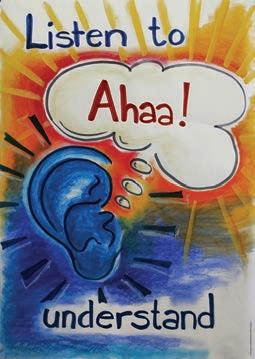
“Those who have used World Café as a tool know that a culture of conversational leadership offers citizens the opportunity to experience a sense of oneness and connect edness. We’ve explored what happens when we share feelings of care, compassion and appre ciation toward a beloved community,” says Kleitsch. “We found that group resonance, profound personal involvement and deeply engrossing, interactive conversation supports a City of Compas sion and an International City of Peace, which St. Petersburg was chosen to be. I want to be sure that people understand that we do not have answers. Together, we are exploring pathways and listening for the answers to emerge.”
Since 2020, a thoughtfully selected group of Florida ac tivists—including participants from St. Petersburg—have been holding weekly online Zoom conversations that mat ter. In 2021, they were joined by participants from Ohio to study the Capra Course,
theworldcafe.com
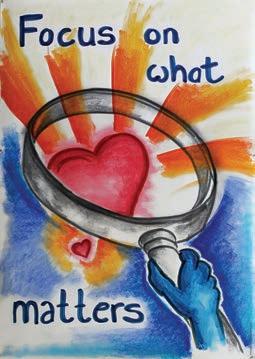
which is based on The Systems View of Life: A Unifying Vision by bestselling author Fritjof Capra

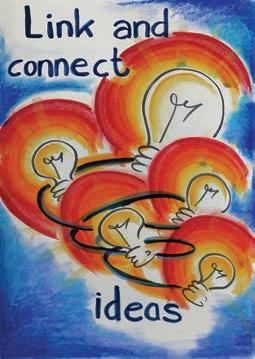

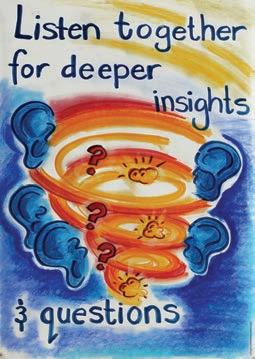
“What we discovered after only two weeks was that we were ourselves a living system connecting to itself and be coming self-organized,” says Kleitsch. “We became aware that we were learning together. We were sharing what we were learning around subjects such as honoring Indigenous peoples, local food systems, the human right to clean water, reimaging capitalism and many more subjects. We’ve also bifurcated into a Sarasota [Florida] cohort. The key is, we were not random. We were a self-selected study group learning collaboratively, which is the best way I recommend activ ists study the Capra Course.”

Argerie Vasilakes, who is researching outcomes, explains that her work is dedicated to helping teams, communities and organizations become more coherent. “I start with traditional ways of thinking about our relationships with nature that native peoples have never forgotten—humans are part of nature, not apart from nature,” she explains. “To me, human organizations, commu nities, families and govern ments are also part of nature and examples of natural ecosystems. So, I naturally look at things from a living systems perspective.”
Vasilakes advises, “In a group that is learning together, such as those in the St. Petersburg neighborhoods, group conversations organized around questions specifically crafted for the context and desired purpose of the World Café evoke a deeper kind of listening, the most important factor determining the success of a Café. They spark learn ing conversations that can produce insights and innova tion for meeting the challenges they face. Through practicing shared listening and paying attention to themes, patterns and insights, participants begin to sense a connection to the larger whole.”
According to Wheatley, the
important work is to foster critical connections. She believes it is not necessary to convince large numbers of people to change; instead, she suggests we connect with kindred spirits. Through these relationships and tools like The World Café, we can develop the new knowledge, practices and commitment that lead to broad-based change.
Wheatley sometimes opens her interviews with an ancient Hopi prophecy that reads as if it were applicable to our current times: “Here now is a river flowing very fast. It is so great and swift that there are those who will be afraid, who will try to hold on to the shore. They are being torn apart and will suffer greatly. The elders say, ‘Let go of the shore, push off and go into the middle of the river. Keep your heads above the water. Know the river has its destination.’ The elders say, ‘See who is in there with you and celebrate.’ At this time in history, we are to take nothing seriously; least of all, ourselves. Gather your selves. Everything we do now must be done in a spirit of celebra tion, for we are the ones we’ve been waiting for.”
Seeing who is in the river of chaos with us, we can choose to respond with, “How can I serve with what I have, where I am?” This
is what any Warrior of the Human Spirit would say because in the same river of chaos, there are also the seeds of transformation. In these turbulent times when all the old boundaries are unravelling and all the old certainties are dissolving, there is a possibility for creative transformation if we work together.


 by Gayatri Bhaumik
Magic Bowls/Unsplash.com
by Gayatri Bhaumik
Magic Bowls/Unsplash.com
For centuries, humans have employed sound in an attempt to heal and cure. The ancient Greeks believed in the power of music, using flutes, lyres and zith ers to treat illness and vibrations to alleviate mental disorders. Even today, military bat talions play music to boost morale.
“Research shows that vibrations are the lan guage of the body,” says Kyle Godfrey-Ryan, the founder of TUNE, a New York-based tech system designed to recalibrate the nervous system with sounds. “When we work with sound, we’re working with vibra tions that can rebalance the nervous system and flood the body with endorphins.”
According to Susy Markoe Schieffelin, a healing practitioner at The Copper Vessel, in Los Angeles, “Sound vibrations work on a cellular level to recalibrate the body. Sound shifts vibrations in the body, both through entrainment—a process by which the vibra tions of one object transform to match the higher vibration of another object—and by stimulating electric signals in the brain that support healing frequencies.”
Studies suggest that sound vibrations can unlock energy blockages, release tension and create calm and focus. For this reason, sound healing is frequently prescribed to manage conditions like anxiety, depres sion and post-traumatic stress disorder. Some practitioners also report anecdotal metabolic improvements, from lower blood pressure and decreased cholesterol levels to improved sleep.
TUNE has worked with the National Institutes of Health and the Mayo Clinic to gain scientific backing for the brand’s devices. “Our technology reduces stress by 54 percent in 15 minutes,” Godfrey-Ryan claims. “It also has a massive impact on
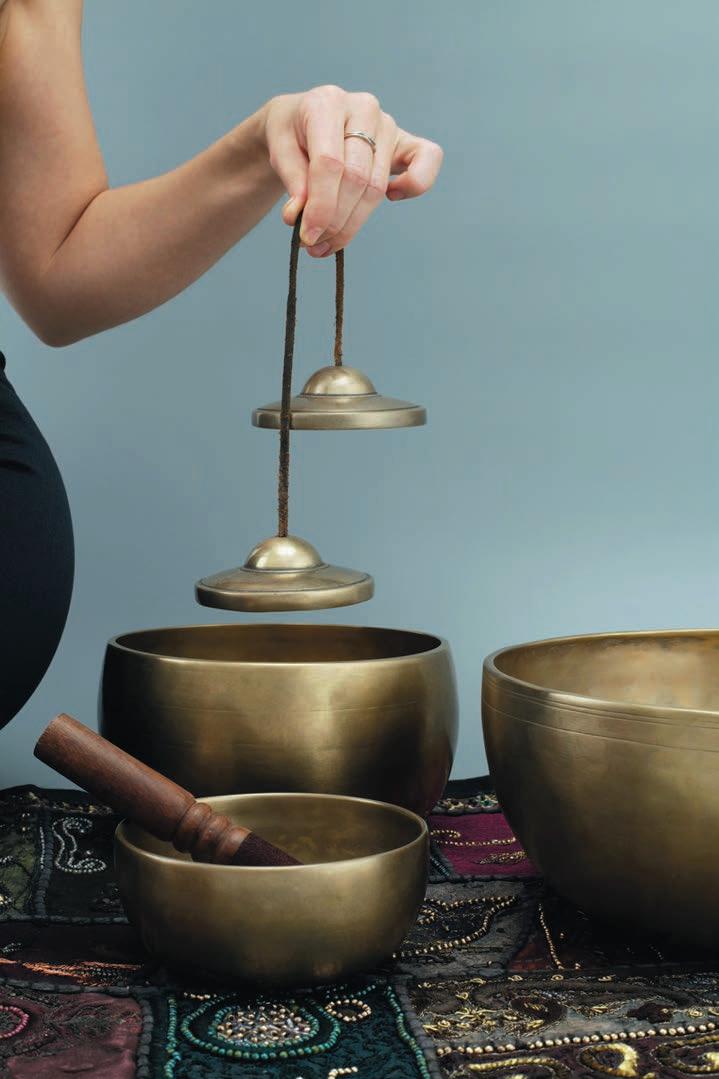
the circadian rhythm, so we’re able to prove better sleep quality, improved metabolism and reduced stress and anxiety.”
Sound healing can take many forms, and each type has specific applications. For example, Schieffelin explains, “Gongs and Tibetan bowls are very clearing and grounding, while crystal singing bowls feel more uplifting and elevating.” It is up to the individual to find a style that works for them and their intended results.
Originating in 12th-century Tibet, these metal bowls come in dif ferent sizes, each producing a specific sound vibration that is said to work on a particular part of the brain or body. Several-sized bowls often are used together to create a holistic healing approach. They can be placed directly on parts of the body to stimulate circula tion and relax muscles. Singing bowls made of pure crystal quartz are popular for their pure sounds, and are believed to offer stress reduction, chakra balancing and mental clarity.
Used in healing since about 4,000 B.C., gong baths, which combine dif ferent tones and melodies to fashion multifaceted vibrations, may positively influence the mind and body by stimulating the vagus nerve. Godfrey-Ryan advises, “Gongs are amazing for trauma release, but gong work is very heavy, so if you’ve never played with sound before, this will be really intense.”
While musicians use these devices to ensure that their instruments are set to the correct pitch, they also can be held next to specific parts of the body by individuals seeking healing vibrations, emo tional balance and pain relief. “Tuning forks are fun because you can have a very strong somatic reaction within a few seconds—they’re very powerful,” notes Godfrey-Ryan.
Solfeggio frequencies are musi cal tunes or sound patterns designed to stimulate the brain by syncing brain waves to specific healing fre quencies. Each of the seven most popular solfeggio frequencies sets out to target a certain purpose, from improving relationships and awakening intuition to navigating change and letting go of fear.


Binaural beats are soundscapes that create a gap between different frequencies. For example, the tune might have a tone of 210 Hertz (Hz) in the left ear and 200 Hz in the right ear, producing an il lusory tone of 10 Hz, also known as a binaural beat. Brainwaves are thought to automatically align themselves with this auditory tone, which may be useful for improving focus and reducing stress.
V.
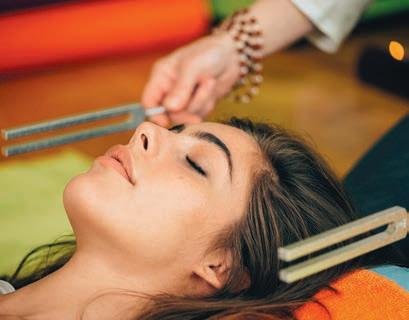
Numerous cultures from ancient Egyptians to Tibetan throat sing ers—have their distinct forms of vocal toning. Hindu mantras can be especially powerful for some people because they harness the energy of specific words and intonations. Among practitioners, seven distinct tones have been linked to specific parts of the body. It is believed that these vibrations can balance the body’s cells and open energetic healing, leading to targeted benefits.
Sound healing is finding a permanent place in modern wellness culture as more people experience its rewards. While there are myriad ways to use sound vibrations for healing purposes, it is up to each individual to find the style that resonates with them and achieves the improvements they seek. With regular practice, they may even find relief that is cumulative and long-lasting.
Gayatri Bhaumik is a professional writer and editor. For more information, visit GayatriBhaumik.com.


The holidays are upon us, and that means decking the halls, gathering with loved ones, exchanging gifts and treats— and creating a lot of waste in the process. From Thanksgiv ing to New Year’s Day, Americans throw away 25 percent more trash than at any other time of year. That’s 1 million extra tons each week, primarily due to waste from holiday gifts and décor. Fortunately, there are ways to cut down on consumption to lessen the environmental impact of the holiday season without sacrific ing any joy.
Ditch grocery store lines and instead shop for the holiday meal at a nearby family farm. By participating in the local food movement,
we will not only enjoy fresh, seasonal ingredients while supporting the local economy, but also sustain farms that build soil health, pro mote animal well-being and offer a more delicious and nutrition ally superior final product. Purchasing food directly from farmers also eliminates the extra packaging and the carbon footprint of transportation that comes with store-bought goods.
In addition to offering fruits and vegetables for holiday pies and soufflés, regional farms can also be good sources for locally sourced grains, holiday meats, baked goods and cheeses. Festive cocktails can be purchased from a neighborhood distillery, brewery or win ery, many of which source their ingredients from local farmers.
Ronald Mirante, founder of Bone-In Food, runs a weekly food delivery service that provides only sustainable, nutrient-dense
foods sourced from local farm partners. According to Mirante, “Shopping for food locally with your farmers for the holiday helps them move offerings they have raised all season long. This empow ers the local food community and makes their operations sustain able by preventing food waste and allowing for economic prepara tion for next year’s harvest.”
For a state-by-state directory of local farmers of meat, eggs and dairy products from 100 percent pastured animals, visit EatWild. com. A directory of family farms and farmers markets, along with restaurants and grocery stores that feature locally produced food, can be found at LocalHarvest.org.
Instead of using unrecyclable gift wrapping paper, switch to a recycled alternative or wrap gifts in pieces of fabric, newsprint or kraft paper that can be repurposed or recycled. To eliminate shop ping and wrapping altogether, give the gift of an experience, which allows loved ones to create lasting memories.

Cater experiential gifts to the needs and wants of the recipient. An exhausted new parent will appreciate a restaurant gift certifi cate or a coupon to pay for a babysitter. Give the budding golfer lessons with a local pro, the theater lover tickets to an upcom ing show and the selfless caregiver a spa treatment to help them feel pampered and refreshed. For the person that seems to have everything, make a donation in their name to a worthy cause that matters deeply to them.
According to publishing executive and mother Tacy Quinn, who runs the Instagram account @friluftslivingfamily, “As our kids get older, we love to find outdoor adventure ideas that are fun to do as a family and get us off our screens. One of our holiday gift-giving traditions each year is to purchase or renew a membership to a local nature organization. Many organizations have great family programs that are included with yearly memberships, so this an nual gift means we get a whole year of outdoor experiences to en joy together. We’ve gone on full-moon hikes, tapped and harvested our own maple syrup, enjoyed solstice bonfire parties and more. Giving a membership gift helps everyone enjoy the outdoors and sustain the natural places we love.”
When it’s not possible to gift an experience, shop locally for gifts made of natural materials, such as a beautiful, wooden, cutting board, a cozy pair of wool socks or a piece of pottery handmade by local artisans. Christmas stockings can create unnecessary waste for the sake of filling them to the brim. Try replacing plastic odds and ends with fruits, nuts or handmade treats like cookies or granola for more sustainable—and tastier—stocking stuffers.
For the most sustainable holiday tree, opt for a potted or locally cut, native choice. Live trees protect the soil, serve as wildlife habitats and filter the air during the six to eight years they’re growing. They also create local jobs. After the holidays are over, the potted trees can be planted. Cut live trees should either be mulched or recycled, rather than thrown in a landfill.


Making just a few simple swaps in gifting, feasting and decorating will ease holiday consumption and lessen its environmental impacts without subtracting any of the joy.
Kirby Baldwin writes for KnoWEwell, the regenerative whole health hub and a collaborative partner of Natural Awakenings Publishing Corp.
When hosting a holiday brunch, it may be tempting to serve breakfast and lunch classics like quiche, eggs Benedict and huevos ran cheros, but many of these dishes can be full of hidden calories, unhealthy fats and too much sodium. With a few easy modifica tions, healthier versions are possible.

According to Jessica Levinson, a New York registered dietitian and author of 52Week Meal Planner, it’s important to read nutrition labels, remove empty calories and introduce nutritious alternatives. As an example, yogurt and granola parfaits may seem innocent, but are often loaded with added sugar. “A serving size of most granolas is only one-quarter of a cup, which isn’t much, so use granola sparingly,” she says, adding that parfaits made with low-fat Greek yogurt and fresh fruit instead of jam are healthier choices.
Traditional quiches are usually made with heavy cream and a buttery pie crust. Levinson recommends a crustless vegetable frittata instead, as it is naturally gluten-free “If you don’t want to skip the crust altogeth er, look for a pre-made, whole wheat crust or make your own,” she says. To eliminate dairy, consider using non-dairy milk and omitting cheese in the recipe
For eggs Benedict, Levinson suggests skipping the hollandaise sauce, topping the poached eggs with mashed avocado and using a whole grain bread or English muffin for the base. “Instead of ham, try smoked salmon, which has beneficial omega-3 fatty acids,” she says.
Whole grain oats are a heart-healthy option, but oatmeal served brûlée-style is topped with additional sugar, notes Frances Largeman-Roth, a New York registered dietitian and author of Smoothies & Juices.
“It’s better to opt for oatmeal and fruit, with a drizzle of real maple syrup,” she says. Largeman-Roth likes mixing savory and sweet, to add variety and protein to the brunch plate. “Instead of just having a stack of pancakes, split it with your friends or family, and then have a small, veggie-filled omelet. You’ll feel much more satisfied.”
When putting together a menu, Levinson advocates incorporating all of the components of a balanced meal: lean protein, carbohy drates from whole grains, fruit and veggies, and low-fat dairy or plant-based substitutes. She says, “If you’re making pancakes or waffles, use whole grain flour when possible, and serve with a side of yogurt, fresh fruit and real maple syrup.”
According to Largeman-Roth, egg lovers will enjoy a veggiepacked omelet or frittata with either potatoes or bread on the side, but not both. Watch out for fried foods and use sauces and cream sparingly or find substitutes. If the family is dining out, she cautions that brunch dishes are often served with extra sauces and syrups, adding sodium and sugar. “ Try to ask for them on the side,” she advises. “It’s not about completely avoiding them, but it’s nice to be able to control the amount that you’re adding to your pancakes or waffles.”
Sheila Julson is a freelance writer and regular contributor to Natural Awakenings.



This healthy dish is a crowd-pleaser any time of year. It’s also glutenfree and can be modified based on whatever veggies are on hand. Omit the feta cheese for a diary-free option.
YIELD: 4 TO 6
SERVINGS
2 Tbsp olive oil
1 cup diced yellow onion
1 Serrano or jalapeño pepper, seeded and minced
1 cup diced yellow bell pepper
1 cup diced green zucchini
1 cup diced yellow summer squash
2 large garlic cloves, minced (1 heaping Tbsp)
1 tsp ground cumin
½ tsp turmeric
1 tsp sweet paprika
26-28 oz diced tomatoes
2 Tbsp tomato paste
2 tsp honey
1 tsp cider vinegar
1 cup corn, frozen, fresh or canned
½ tsp kosher salt
Freshly ground pepper ¾ cup crumbled feta cheese 4 large eggs
Chopped parsley, for garnish (optional) Za’atar, for garnish (optional)
Heat olive oil over medium-high heat in a large skillet (straightsided skillet is preferable). Add onions; sauté 2 minutes. Add Ser rano pepper and bell peppers; sauté 4 minutes. Add zucchini and summer squash; sauté 5 minutes. Add garlic, cumin, turmeric and paprika; stir until fragrant, about 1 minute.
Reduce heat to medium and add diced tomatoes, tomato paste, honey, cider vinegar and corn; stir in salt and pepper. Simmer for about 10-12 minutes until the sauce has thickened and reduced.
Turn off the heat and press the crumbled feta into the tomato sauce. With the back of a spoon, make 4 indentations in the sauce. Crack eggs one at a time into a small bowl and pour into each of the 4 indentations. Carefully drag a spatula gently through the egg whites, being sure not to disturb the yolks. Simmer over low heat for about 5 minutes, gently stirring the sauce and basting the eggs with the sauce. Cover and cook another 3 to 5 minutes for runny eggs. Cook longer for well-done eggs. Serve with a sprinkling of parsley and za’atar, if desired.
Recipe courtesy of Jessica Levinson.

Cooked on a sheet pan, these pancakes make cleanup a breeze and can be prepared the night before. Buttermilk and protein powder add satisfying nutrients.
YIELD: 12 SERVINGS
Cooking spray
2 cups buttermilk
2 eggs, beaten
1 tsp pure vanilla extract
4 Tbsp melted ghee or unsalted butter
⅓ cup maple syrup
1¼ cups whole wheat flour
1 cup all-purpose flour
¼ cup vanilla protein powder
1 tsp baking soda
2 tsp baking powder
½ tsp sea salt
FOR THE SWIRL:
½ cup strawberries
½ cup blueberries
½ cup raspberries
1 tsp brown sugar
Powdered sugar, for topping
Preheat oven to 425° F. Line an 11-by-17-inch, rimmed baking sheet with parchment paper. Spray parchment and sides of pan with cooking spray. Whisk the buttermilk, eggs, vanilla, ghee and maple syrup together in a medium bowl. Set aside. In a separate bowl, combine the dry ingredients—whole wheat flour and salt. Add the wet ingredients to the dry in three additions until just mixed. Pour into the prepared pan and smooth the top.
Blend the berry swirl ingredients in a blender until smooth. Add ½ teaspoon of water if mixture is too stiff. Add small dollops of the berry mixture to the top of the pancake batter. Drag a wooden toothpick or skewer through the berry mixture to create a swirled pattern.
Place the pan in the oven and bake for 11 minutes, until lightly golden. Let cool for about 5 minutes, then sprinkle with powdered sugar. Cut into 12 squares with a knife. Enjoy warm with maple syrup. Can be stored in the fridge for up to two days.
Recipe and photo courtesy of Frances Largeman-Roth.
Cranberries put a holiday twist on a classic mimosa. Drier cham pagnes or sparkling wines are lower in sugar. Making cranberry juice from scratch with sweeteners like maple syrup or honey is a natural alternative to commercial cranberry juice. Prepare the cranberry juice the night before serving.



4 cups homemade (recipe below) or storebought cranberry juice
1 cup orange juice
1 bottle drier champagne, such as Ultra Brut Rosemary sprigs for garnish
Fill four champagne flutes or glassware of choice approximately halfway with cranberry juice. Add 2 Tbsp orange juice to each glass.
Top each glass with champagne. Garnish with sprig of rosemary. Refill as desired.
Recipe courtesy of Sheila Julson.
3 cups fresh cranberries
3 cups water
½ cup pure maple syrup or honey
Put fresh cranberries and water in a pot and bring to a boil. Turn heat to low and simmer for approximately 15 minutes until the berries soften and pop.
Using a fine mesh strainer or cheesecloth, strain the berries and return the juice to the pan. (Use leftover cranberries in smoothies, yogurt or relish.)
Gradually add maple syrup or honey until desired sweetness is achieved. Heat on low until sweetener dissolves.
Pour juice into an airtight bottle and refrigerate.
Recipe courtesy of Sheila Julson.
Teaching children the value of generosity and kindness is not just good for the world, it is good for our kids, too. Studies have shown that acts of altruism can boost the immune system, lower blood pressure, increase self-esteem, reduce depression and lower stress levels. Selfless contributions also can foster a sense of belonging, whether they are donating material things, sharing their time or freely conveying love and kindness. A magnanimous child is repaid with benefits that nourish the body and soul.
To transform children into givers, they need to learn how to share and comprehend other people’s feelings. Known as cognitive empathy, it involves understanding another person’s emotions on an intellectual level, taking into consideration their situation and

anticipating how they might react.
Since the 1990s, scientists have been researching mirror neurons which respond to actions that we observe in the same way as when we actually perform those actions ourselves. These neurons play a consider able role in the development of speech, language, learning, emotional intelligence, empathy and understanding, so children need to see and receive acts of giving and love to become givers themselves.
With mental health conditions in children on the rise, charitable behavior can improve their mental well-being and help them secrete “feel-good” chemicals in the brain like oxytocin, dopamine and sero tonin. “I think helping our kids ex perience the happiness that comes from giving to others is probably one of the most valuable ways we can nurture generosity in them,” says Lara Aknin, an assistant professor of psychology at Simon Fra ser University, in Canada. “It sets off this positive cycle. Giving makes people happy and happiness promotes giving.”
Functional MRIs of people that donate to chari ties have shown that the act of giving stimulates reward centers of the brain where endorphins are released. These hormones lower cortisol, improve blood circulation, lower blood pressure and heart rate, improve digestion, clear out toxins, help the immune system fight infections and renew energy to repair cells and fight cancer. Other benefits include lower inflammation overall, improved sleep, decreased feelings of restlessness and reductions in chronic pain.

In a 2020 study reported in JAMA Network, researchers found that young adults ages 19 to 20 that perceived higher levels of social support—the feeling that there is some one they can depend on for help should they need it—were less likely to report depressive and anxiety symptoms or suicidal ideation one year later. The study also found that even in cases where people previously experienced mental health problems, social support was beneficial for mental health later on.

Love and secure attachments, such as those experienced through acts of giving, strength en the body; help regulate emotions, attention and behavior; mitigate the effects of stress; and promote lifelong, healthy development.
Volunteering makes an immeasurable difference in the lives of others and creates a sense of purpose in the person doing it. Science has shown that engaging in volunteer work can decrease depression, reduce stress, increase longevity and help the person stay mentally and physically
active. Volunteers get to meet others, develop new relationships and strengthen existing relationships with those that have similar goals and interests. There are many opportu nities for children and parents to volunteer through school, religious and nonprofit organizations.

Anna/AdobeStock.com

Random acts of kindness and generosity include smiling, hold ing the door open for someone and reaching out to loved ones. Include a child in these activities and encour age them to do the same.
“When you see your children being generous, point it out and praise them,” recommends The Center for Parenting Educa tion. “Help them put into words the positive feelings they may have as they help others.”
The most important ingredient to develop a child with a healthy brain and body is love. Children need positive experiences for pathways in their brain and body to work. Developing empathy for themselves and others increases emotion al strength and self-regulation. Improve the life of a child—physically, emotionally and spiritually—by teaching them the simple of act of giving.
Madiha Saeed, M.D., ABIHM, is the bestselling author of The Holistic RX, an international speaker, founder of HolisticMomMD.com and director of educa tion for KnoWEwell.com.
The holidays are a great time to con nect with loved ones, including family pets. Although treats bring such joy to their lives, keep in mind that not all foods around the holiday table are safe for dogs and cats. There are, however, plenty of pet-safe in gredients, some of which are actually beneficial.
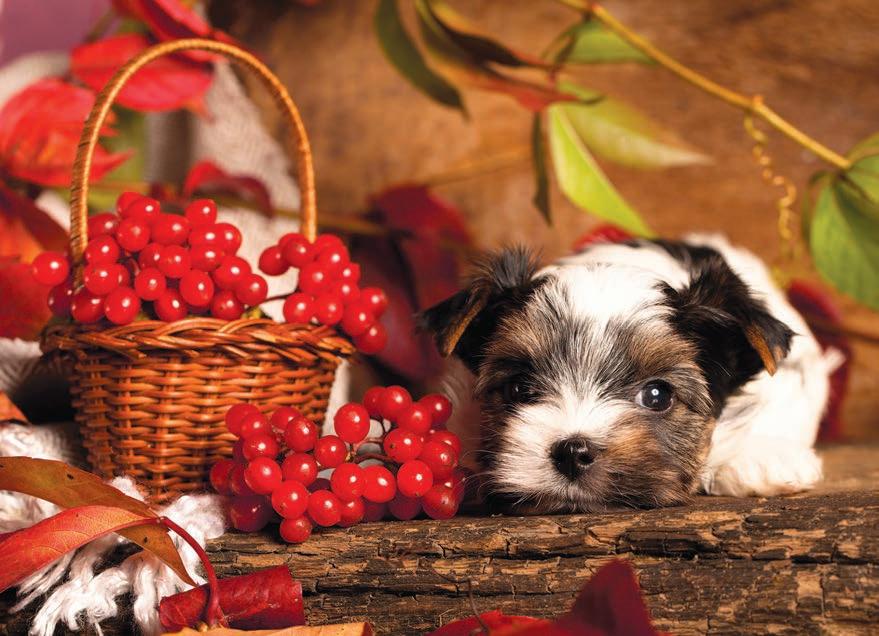
Cranberries, for example, have been classified as a “su perfood”, which means they provide many beneficial nutrients and antioxidants, such as vitamins C, E and K, plus manganese. They are also high in fiber, which supports gut health. When feeding them to a pet, it is important to choose 100 percent cranberries that do not contain any sugars or preservatives.
When cooking up a batch of pet treats, coconut flour is healthier than the traditional, all-purpose flour, because it contains more fiber, protein and healthy fats. It is also glutenfree, making it a better alternative for pets with allergies.
Beef gelatin is chock-full of health benefits for pets, as it contains amino acids that help break down food, repair body tissue, support the immune system and provide energy. Among its numerous advantages, gelatin strengthens bones, muscles and cartilage, while also improving gut health, skin and fur. Always check the ingredient list. Use 100 percent gelatin and make sure there is nothing else included, especially Xylitol or birch sugar.
Sweet potatoes provide a wealth of nutrients from which both dogs and cats can benefit. They are a good source of fiber and high in antioxidants, including beta carotene, which is rich in vitamin A and supports good cognition and lung strength.
Turkey breast supplies a wide range of B vitamins, including B6 and B12. It also pro vides iron, potassium, zinc and selenium, which help support a healthy immune system.
All of these treats make great pres ents. Place them in a decorative container and gift them to pet-loving friends and family.
Tonya Wilhelm is a professional dog trainer with a holistic approach. For more informa tion, visit RaisingYourPetsNaturally.com.
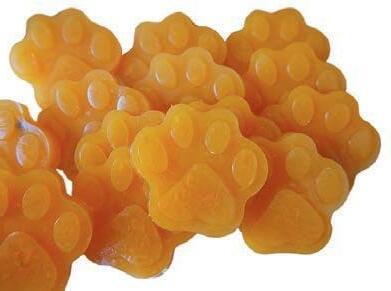
This recipe is cat-friendly, but a kitty may not dive into the delight.
3 cups water
½ cup sweet potato
3 Tbsp beef gelatin
Silicone molds and cookie sheet
Measuring cup with a spout for pouring
Boil 2 cups of water. Remove the skin from a sweet potato. Dice the sweet potato and place ½ cup into the boiling water. Boil until the sweet potato is soft and then drain it.
Mash the sweet potato into a smooth con sistency and set it next to the stove.
In a small saucepan, boil one cup of water. Once the water reaches a boil, quickly whisk in the gelatin. When the gelatin is dissolved, lower the heat and add the mashed sweet potato and stir over the heat. Pour the mixture into the measuring cup. Then quickly pour the hot liquid into the silicone molds. Don’t fill to the top. Because many silicone molds are floppy, place them on a cookie sheet prior to filling them.
The molds will need to be refrigerated to cool, so find a spot before pouring. Be ready: The gelatin will start to set up very quickly. Carefully place the molds into the refrigerator to set up for approximately three hours.
Remove the treats from the molds and break them into bite-sized pieces before feeding to pets. Store the gummies in a glass container in the refrigerator for up to three days or freeze until ready to serve. Thaw completely before serving.
These muffins are full of flavor and nutrition, and are healthy for both dogs and cats, although a finicky cat may turn her nose up to them.

1 cup coconut flour
5 eggs
⅓ apple or ⅓ cup diced apple
⅓ cup liquid (water, or bone broth)
2 cups water
¼ cup cranberries
2 Tbsp melted coconut oil
1 tsp baking soda

Preheat the oven to 350° F. Rinse the fresh cranberries under cold water. Place 2 cups of water into a saucepan and bring to a boil. Place the clean cranberries into the water and boil until they pop, approxi mately 5 minutes. Remove from heat and strain the cranberries. Set the cranberries aside to cool.
Remove the seeds and core from the apple. Dice ⅓ of the apple into small bits.
Mix the flour, eggs, apple, ⅓ cup liquid, melted coconut oil, cooked cranberries and baking soda in a large mixing bowl until well-blended.
Grease a muffin tin with coconut oil. Fill the muffin tins ⅔ full and place them into the oven. Bake for approximately 25 minutes or until a toothpick comes out clean. Carefully remove and place on a cooling rack. Serve as a special treat. Place treats in a glass container and refrigerate for up to three days or freeze until ready to serve.Thaw completely before serving.
This easy turkey recipe will have felines purring with delight. It’s a healthy snack for a cat and a great dog-training treat for the clever pooch.


Fresh, boneless and skinless turkey breast
Thinly slice the turkey breast into strips—the thinner, the better. Place strips on a dehydrator tray. Do not overlap the strips. Dehydrate at 145° F until the turkey is crispy, which can take between eight to 12 hours.
Allow the turkey to cool completely before removing it from the trays. Break into little bite-sized treats for cats and dogs. Store the jerky in a glass container in the refrigerator for up to a week or freeze until ready to serve. Thaw com pletely before serving.

Forget the gherkins and dills this holiday season; there’s another pickle in town. This one offers a great way to get in shape, increase happiness and bond with family and friends. It’s pickleball: a simple-to-learn sport that requires less running than tennis and can be played both indoors and outdoors. Players use oversized ping pong-style paddles to hit a wiffle ball over a low net on a badminton-sized court.
The Economist , and other media, say pickleball is America’s fastest growing sport. While seniors are particularly drawn to it, it is also catching on with all ages. “The fastpaced games make it easier for kids to stay engaged, as well as socialize with their peers,” says Sarah Ansboury, director of pickleball at Palmetto Dunes, in South Carolina. “Many families do pickleball events for holidays and reunions. Pickleball enables people of all ages to participate.”
According to the Sports & Fitness Industry Association (SFIA), there are 4.8 million pickleball players in America, with 51 percent between 6 and 34 years of age. At the end of 2021, there were 9,524 pickleball courts across the U.S.

In 2020, Mecklenburg County, in the Charlotte, North Carolina, area, opened the eightcourt John Stevens Pickleball Center, the eighth facility in the county where citizens can play the game. Since 2014, the number of public and private courts in the same region has soared from two to more than 100.
The SFIA says growth is happening across the country, with participation spiking 40 percent during the pandemic. In Florida, St. Lucie County unveiled four new courts at its Lakewood Regional Park in September. Even bars are getting into the act, such as Dale Z’s, in Milwaukee, which christened its pickleball court in the same month.
Being a super athlete is not a prerequisite for playing the game, according to Mac McCullough, a pickleballer in Scottsdale, Arizona. “I used to play other sports, but running and tennis got harder on my knees,” he says. “Pickleball has a lower net and a smaller court, so you aren’t running as much. Still, it gives you a good workout and it’s easier on your joints.”
A 2016 study published in Medicine & Science in Sports & Exercise c onfirms that pickleball provides a good workout. According to the researchers, average heart rate and peak heart rate were higher during pickleball than when walking. Participants burned 40 percent more calories in 30 minutes of the sport than in 30 minutes of walking. Additionally, the study concludes, “Pickleball is more enjoyable than walking at a self-selected speed.”
Dr. Dennis Pena, a podiatrist from Phoenix, says the game has improved his hand-eye coordination. “The more I play pickleball, the better my balance, coordina tion and movement get,” he says. “It’s a good cardio workout, and I just feel better overall when I play regularly.”
A study from Western State Colorado University indicates that pickleball fosters many health benefits over a wide range of ages. The study followed 15 people between 40 to 85 that played for an hour three times per week. All participants showed
improvement in cardio fitness, blood pressure and cholesterol levels.
Research has confirmed that exercise boosts endorphins, which reduces stress and improves overall sense of well-being. A 2018 study from a group of researchers in the U.S. and South Korea showed that pickleball can help stave off depression, too. It reported that although depression rates are increasing in the U.S., people involved in “serious leisure” such as pickleball are less prone to depression.
It’s not just older people that can benefit from the recreational activity. Teen obe sity rates have skyrocketed nationwide, much of it due to a lack of exercise. Pick leball could help combat this. It is fun, easy to learn, boosts cardio fitness and can be played just about anywhere. Some colleges are now even offering pickleball scholarships.
Holly Fitzgerald, a physical therapist from Woburn, Massachusetts, gives this advice on how to get ready to play the game:
Squats with body mass can help develop and stretch quadriceps and hamstrings, enabling the ability to compress leg muscles swiftly and consistently. This will help reduce gravitational pull to address the pickleball as it comes at us.
Large arm circles will stretch muscles and prepare them for the considerable movements that occur when striking a ball.

Exercises that develop the core, such as core twisting, are also ben eficial.
Places2Play.org provides a search engine to help find a court anywhere in America. Pickleball is a great way to get family and friends together over the holidays and beyond. It is fun, helps nurture relationships and it is a lot healthier than grazing on holiday leftovers while scan ning social media.
Jyl Steinback is the executive director of Shape Up US, creator of the Hip Hope Healthy Heart Program for Children, an au thor and a recipient of a Community Leader ship Award from the President’s Council on Sports, Fitness and Nutrition. Reach her at Jyl@ShapeUpUS.org.
Despite the whirl wind of our to-do and places-to-go lists, the wheel of the year turns once more, al lowing us to close another chapter of our lives with grace. If we take a breath, we might notice December’s invitation to kick off our shoes, curl up in our favorite chair and drop down into our heart space. Whether we light scented candles for ambi ence, drink cocoa while sitting around a bonfire or continue time-honored spiritual customs, welcoming the light can ignite hope when we need it most. By cultivat ing the inner sun, that place deep within us that blazes with resilience and plenty, we not only fortify ourselves, but everyone around us. Throughout the year, many of us invest in making healthy choices, but neglect soul sustenance. Swapping trivial distractions for more face-to-face conversa tions, answering someone’s forgotten email or bringing a homemade pot of soup to a neighbor that is busy packing for a move creates a feast of light during all seasons.
“ Thousands of candles can be lit from a single candle,” wrote Gautama Buddha, and perhaps we would be astounded to see how far the smallest gesture can travel. Inviting a friend that has no family to a

holiday dinner or out for coffee, spending more quality time with a child or buying a gift card for the receptionist at the dental office begets a chain reaction of small joys. When we fill our bellies with everyday magic, slow down to finish a cup of tea, turn off the news and notice the crescent moon nestled in the twilight, we become more inclined to feel blessed.
A few worthy inspirations to pass along:
n Make it a spiritual offering to choose joy today
n Close the year by letting go of a griev ance or an outdated belief
n Tell someone how they bring light into your life
n Share a favorite book that is inspiring
n Acquire a new source of light—a lantern or salt lamp—for your favorite room
n Leave an uplifting quote on a loved one’s voicemail
Marlaina Donato is an author, painter and composer. Connect at WildflowerLady.com.
As we indulge in magnificent feasts and open gifts in cozy living rooms, let’s pause to express gratitude for all that we have and look for ways to help those less fortunate. The holiday season is the time for giving. One of the best ways to get into the spirit is by volunteering time and treasure to meaningful causes and underprivileged individuals. Here are a few ideas.
Find a nearby impoverished family that could use a houseful of gifts, including toys, blankets and warm clothes, then do a little shopping and make their holiday dreams come true. Local social service agencies can help identify the lucky family.

Spend an afternoon making holiday greeting cards to warm the hearts of lonely seniors, U.S. armed service members and children in hospitals battling serious illnesses. This is a great activity to do with kids—teach ing them important lessons about kindness and generosity. For cardmaking ideas and distribution help: RedCross.org, LoveForOurElders.org, CardsForHospitalizedKids.com and ColorASmile.org
Nothing is sadder than a child without at least one holiday gift. Fortunately, several organizations and thousands of generous people do their very best to fill those empty little hands with merriment. Here are a few places that need donations of time, money and gifts: ToysForTots.org, Samaritans Purse.org, SalvationArmyUSA.org and OperationHelpAHero.org.
Some kids could really use the cozy warmth and comfort of their very own security binky. Here are two organiza tions that provide blanket-making ideas and instructions, and also help facili tate their collection and distribution: ProjectLinus.org and BinkyPatrol.org
This is a wonderful group project for families or classrooms.
Food insecurity is a serious problem in this country, and lowincome families that rely on government assistance and food banks for everyday nutri tion will likely not have the wherewithal for a holiday feast. Here’s where our help comes in. The following organizations either serve free holiday meals or give away food baskets: local churches, temples and mosques; MealsOnWheels America.org; neighborhood food pantries and soup kitch ens; and SalvationArmyUSA.org
Here are a few charities that ac cept monetary donations and sweat equity to aid children battling serious diseases or troubled family situations: StJude.org, OneSimpleWish.org, Wish.org and Prison Fellowship.org
These organizations accept dona tions of money and time: the American Society for the Prevention of Cru elty to Animals (aspca.org); National Wildlife Federation (nwf.org); Best Friends Animal Society (BestFriends. org); Friends of Animals (FriendsOfAnimals.org); Animal Welfare Institute (awionline.org); Alley Cat Allies (AlleyCat.org); Jane Goodall Institute (JaneGoodall.org); and The Hu mane Society of the United States (Humane Society.org).

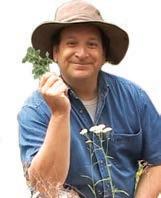
Apnea Relief wholistic solution to get you off CPAP

Leg Relaxer cramps with an effective combination of herbs that relax nerves, reduce tension and increase circulation




Hi, I’m Steve Frank and I suffered from sleep apnea for years. My patent-pending formulation has helped thousands return to sleeping well and I use it every night.
My Mom asked me what to do about the persistent leg cramps keeping her Relaxer was the result of my research, and it works for Restless Legs as well!
Now you can use these effective solutions too!
When was the last time you had a great night’s sleep?
If you’re too tired to remember, it’s time to try something new!
Connecting you to the leaders in natural health care and green living in our community. To find out how you can be included in the Business Directory, email PhoenixAds@NaturalAZ.com or visit NaturalAZ.com and download our media kit.
ARIZONA LEECH THERAPY
Pavel Gershkovich, CHP, CRP, PMP, Therapist 8765 E Bell Rd, Ste 110, Scottsdale 480-621-6041 • ArizonaLeechTherapy.com ArizonaLeechTherapy@gmail.com



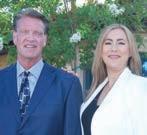
Pavel Gershkovich, owner of Arizona Leech Therapy, is a professional medicinal leech therapist. He is here to help you find a natural, drug-free solution for your medical conditions, such as cardiovascular, high blood pressure, migraine, urology/ prostate, varicose veins, and deep venous thrombosis. See ad, page 25.
NATURAL MEDICINE & DETOX


2701 N 7th St, Phoenix 602-307-0888 NaturalMedicineDetox.com
We offer professional medical assistance with one of our Doctors of Acupuncture & Oriental Medicine, MD(H), or Classical Homeopaths. We also have several self-elect options for our many detox services. Please call to schedule a free 15-minute consult to learn what service might be the best option. See ad, page 29.

MacKenzie Kalt, Owner/Director 4050 E Greenway Rd, Ste 5, Phoenix 480-594-5052 • NatPainTreat.com

Providing some of the most advanced natural technologies for those struggling with chronic pain, injuries, stress, migraine headaches, PTSD, insomnia, Lyme disease, autoimmune disorders, skin conditions, and much more. Visit our website to learn more. See ad, inside front cover and page 25.
PIHMA COLLEGE & CLINIC

Acupuncture, Herbal Medicine and Homeopathic Clinic 301 E Bethany Home Rd, Ste A-100, Phoenix 602-274-1885 • pihma.edu
PIHMA offers Acupuncture Treatments, Herbal Consulta tions, Acute and Constitutional Homeopathic Consultations, as well as Auricular Acupuncture, Cupping, Moxibustion, Gua Sha and Tui Na. Our medicines have been used for thousands of years to treat numerous conditions, including pain, stress and more. PIHMA is a teaching clinic and offers affordable pricing.
148 N Center St, Mesa 480-694-9931 • SWHerb.com Store.SWHerb.com
Kathy Gould and Madalyn Johnson, herbalists and proprie tors, offer medicinal bulk herbs and specialty tea blends, herbal extracts, certification classes, community and therapist rental space, medicine-making supplies, and more. See ad, page 18.
WATERCOLOR ART CLASSES
Allura Westly 3611 E Sunnyside Dr, Phoenix AlluraWatercolor@cox.net 602-469-0524 • AlluraWaterColor.com

Allura Westly, master teacher, opens her sanctuary studio to all levels, beginner to advanced. Learn fluid color technique, drawing and composition. Small class of eight students. No talent required, just a desire to create.
BENNETT’S CARPET & UPHOLSTERY CLEANING

Valleywide Service • 480-994-4988 BennettsCarpetCleaningAZ.com


Eco-friendlycarpet and upholstery cleaning. Featur ing organic cleaners and
odor removal products derived from renewable seed and vegetable sources. No perfumes, solvents or other hazardous products. No phosphates. Products also available for in-home use. Licensed and owner operated since 1974. See ad, page 12.
MILLENNIUM DENTAL ASSOCIATES
5705 N Scottsdale Rd, Ste D-110, Scottsdale 480-948-0560 MillDental.com
Millennium Dental offers more than 50 years’ experience in holistic dentistry, including advanced general dentistry Certified by the IABDM. See ad, page 9.

Dr. Michael Margolis and Dr. Stephen Kovar
2045 S Vineyard Rd, Ste 153, Mesa 480-833-2232 • MyDentistAZ.com
A holistic and biological ap proach to your dental needs and overall health. Bio-com patible dentistry, esthetic dentistry lumineers/veneers, family dentistry and much more. See ad, page 3.
NATURAL DENTAL PARTNERS
3134 W Carefree Hwy, Ste 9, Phoenix 602-775-5120 • MyNaturalDentist.com
The doctors at Natural Dental Partners take the time to listen to your concerns and use their extensive experience to help you achieve better health. Using the latest technology (such as lowdose 3D imaging, CEREC, lasers, PRF, ozone and treatment of sleep disorders), they believe in a team approach to help you achieve your healthcare goals. Check out MyNaturalDentist. com or ABreathOfHealth.com to see how they can help you. See ad, pages 5 and 19.
Melanie Icard, NMD
1430 E Missouri Ave, Ste B127, Phoenix 480-599-8370 • ButterflyHolistic.com
Dr. Icard specializes in biological medicine, peptides, PRP, aesthetics and ozone therapy. Her offerings include holistic antiaging medicine, pain reversal, natural and traditional aesthetics, ozone therapy, holistic ketamine therapy, and sexual health regeneration. See ad, pages 11 and 13.
KIM CARTER, MA, HTCP
15215 S 48th St, Ste 154, Phoenix Kim@IntuitiveKim.com IntuitiveKim.com
Kim is an Intuitive and Healing Touch Certified Practitioner offering guidance when you feel out of alignment with your authentic self. Stress, fear, anxiety and grief/loss throw us off balance, making it challenging to access inner wisdom. Sessions include reading and clearing your energy field; and simple, practical self-healing tools to keep you balanced and grounded. See ad, page 13.
FENG SHUI 81
Lori Thomas
Feng Shui Instructor/Practitioner 480-370-3310 • FengShui81.com
Feng shui is a study of how energy flows in one’s home. Lori Thomas offers private consultation and classes to teach how to correct energy imbalances to prevent mishaps in one’s life, improving health, abundance, relationships and more. She is an Intuitive with extensive training in feng shui and healing arts. See ad, page 12.
SCNM MEDICINARY
2152 E Broadway Rd, Tempe 480-970-0001 • Shopscnm.com
The SCNM Medicinary is the largest natural medici nary in Arizona, providing a wide variety of vitamins, nutritional supplements, books, herbs, homeopathic remedies, tinctures and other health products. Order by phone at 480-9700001 or visit us today – we offer shipping and curbside pickup! See ad, page 27.
Michael Smith
Sr. Account Manager MSmith@StandardProcess.com StandardProcess.com
Standard Pro cess is a Wis consin-based, family-owned company that
has been a leader in making whole food-based nutritional supplements since 1929, and is com mitted to changing lives by partnering with healthcare practitioners to support optimal health through nutrition. See ad, page 6.


ARIZONA ORGANIC PEST & TERMITE CONTROL


Organic Pest Control 602-923-1457 • ArizonaOrganic.com
The Path of Spiritual Freedom 1-877-300-4949 • EckankarArizona.org Eckankar.org • HearHU.org Facebook.com/EckankarArizona
Eckankar is an active, individual, creative spiritual practice. A companion and roadmap for your journey home—to the heights of SelfDiscovery and God-Discovery, and beyond. Come along and discover the most secret part of yourself. The key to spiritual freedom lies within you. Explore life as a Soul Adventure. See ad, page 10.
THE SUMMIT LIGHTHOUSE®

4105 N 20th St, Ste 115, Phoenix 480-442-5020
SummitLighthousePhoenix@gmail.com SummitLighthousePhoenix.org

Avoid being exposed to dangerous chemicals when all-natural and safer alternatives work just as well and last longer. See ad, page 29.



ANDREA BRIGGS, AKA “CRITTER DOC”
ASAM, Sh. Reiki, HTAP Animal Communicator and Counselor 602-317-1543 • CritterDoc1@cox.net SpiritAnimalWisdom.com
With a gentle healing touch, Andrea provides earth medicine and energy healing, animal communication, and intuitive counsel for pets and their people.
Dedicated to sharing Saint Germain’s Violet Flame. All faiths welcome. Learn how you can become a modern day mystic. We are dedicated to sharing the Teachings of the Ascended Masters® to help you bring in joy and peace to the world. Learn what the requirements are to make your ascension. See ad, page 27.
SOUTHWEST INSTITUTE OF HEALING ARTS

1538 E Southern Ave, Tempe 480-994-9244 Info@swiha.edu • swiha.edu
Nationally accredited college offers holistic health and wellness degrees, diplomas, certificates of excellence, continuing education and personal development, oncampus and online. Financial aid available. See ad, outside back cover.
A candle loses nothing by lighting another candle.
~James Keller
123rf.com/lola1960
NOTE: Please check market websites and ArizonaCommunityFarmersMarkets.com for more information on days and hours, and any restrictions.
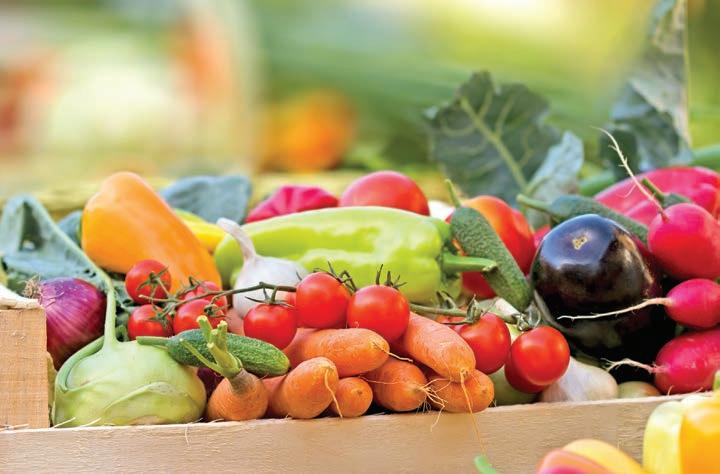
Ahwatukee Farmers Market
4700 E Warner Rd, Phoenix
Sundays Oct-May 9am-1pm Jun-Sep 8am-11am Facebook.com/AhwatukeeFarmersMarket
Care 1st Farmers Market
328 W Western Ave, Avondale
Tuesdays Jul-Oct 8am-noon
ArizonaCommunityFarmersMarkets.com
Carefree Farmers Market
1 Sundial Circle
Fridays Oct-May 9am-1pm Jun-Sep 8am-11am
Facebook.com/CarefreeFarmersMarket
Downtown Chandler Farmers Market
3 S Arizona Ave
Saturdays Oct-May 9am-1pm Jun-Sep 7am-10:30am Facebook.com/ChandlerFarmersMarket
Downtown Mesa Farmers Market
1 E Main St
Saturdays 8am-noon dtMesaFarmersMarket.com
Downtown Phoenix Farmers Market
721 N Central Ave
Saturdays Oct-Apr 8am-1pm May-Sep 7am-11am
DowntownPhoenixFarmersMarket.org




Gilbert Farmers Market 222 N Ash St Saturdays Oct-Mar/Apr 8am-noon Apr/May-Sep 7am-11am GilbertMarket.com
High Street Farmers Market 5415 E High St, Phoenix Sundays Oct-May 10am-1pm Facebook.com/Farmers-Market-on-HighStreet-2244771575799425
Mommas Organic Market
Arrowhead Farmers Market 7780 W Arrowhead Towne Center, Glendale Saturdays Oct-May 9am-1pm | Jun-Sep 8-11am Facebook.com/Getlocalazfarmersmarkets GetLocalArizonaEvents.com
Mommas Organic Market
Glendale Farmers Market at Cabela’s 9380 W Glendale Ave, Glendale, AZ 85305 Sundays Sep-May 10am-2pm | closed for summer Facebook.com/Getlocalazfarmersmarkets GetLocalArizonaEvents.com
Old Town Scottsdale Farmers Market
3806 N Brown Ave Saturdays 8am-1pm
ArizonaCommunityFarmersMarkets.com
Power Road Farmers Market 4011 S Power Rd, Mesa Monday-Saturday 9am-5pm | Sunday 9am-4pm PowerrdFarmersMarket.com
Roadrunner Park Farmers Market
3502 E Cactus Rd, Phoenix
Saturdays Oct-May 8am-1pm | Jun-Sep 7am-11am
Facebook.com/RoadrunnerParkFarmersMarket
Singh Meadows Farmers Market
1490 E Weber Dr
Fridays, Saturdays & Sundays 8am-2pm Facebook.com/SinghFarms
Sun City Farmers Market
16820 N 99th Ave
Thursdays Oct-May 9am-1pm Facebook.com/Sun-City-Farmers-Market631299790224049
The Capitol Farmers Market
1700 Adams St, Phoenix
Thursdays 10:30am-1:30pm
ArizonaCommunityFarmersMarkets.com
Uptown Farmers Market
5757 N Central Ave, Phoenix
Wednesdays Oct-Apr 9am-1pm & May-Jun 8am-noon

Saturdays Nov-Apr 9am-1pm & May-Oct 8am-noon UptownMarketAZ.com
Verrado Community Farmers Market
N Market Pl & W Main St, Buckeye Sundays Oct-Jun 9am-1pm Facebook.com/VerradoCommunityFarmersMarket
Flagstaff Community Farmers Market
211 W Aspen Ave, City Hall Parking Lot Sundays May-Oct 8am-noon FlagstaffMarket.com
Prescott Farmers Market
Dignity Health, YRMC
900 Iron Springs Rd, Miller Valley Lot Saturdays 7:30am-noon PrescottFarmersMarket.org

Sedona Summer Community Farmers Market
Tlaquepaque/Creekside, 336 Hwy 179 Fridays May-Oct 8-11:30am
Sedona-Farmers-Market.com
Sedona Winter Community Farmers Market
Wells Fargo Bank Parking Lot 2201 W State Rte 89A, West Sedona Sundays Oct-May noon-4pm
Sedona-Farmers-Market.com
Scientists have discovered a natural way to kill germs fast.
Now thousands of people are using it against viruses and bacteria that cause illness.
Colds and many other illnesses start when viruses get in your nose and multiply. If you don’t stop them early, they spread and cause misery.
Hundreds of studies confirm copper kills viruses and bacteria almost instantly just by touch.
That’s why ancient Greeks and Egyptians used copper to purify water and heal wounds. They didn’t know about viruses and bacteria, but now we do.
“The antimicrobial activity of copper is well established.” National Institutes of Health.
Scientists say copper’s high conductance disrupts the electrical balance in a microbe cell and destroys it in seconds.
The EPA recommended hospitals use copper for touch surfaces like faucets and doorknobs. This cut the spread of MRSA and other illnesses by over half, and saved lives.
The strong scientific evidence gave inventor Doug Cornell an idea. He made a smooth copper probe
with a tip to fit in the bottom of the nostril, where viruses collect.
When he felt a tickle in his nose like a cold about to start, he rubbed the copper gently in his nose for 60 seconds.

“It worked!” he exclaimed. “The cold never happened. I used to get 2-3 bad colds every year. Now I use my device whenever I feel a sign I am about to get sick.”
He hasn’t had a cold in 10 years.
Users say:
“It works! I love it!”
“I can’t believe how good my nose feels.”
“Is it supposed to work that fast?” “One of the best presents ever.” “Sixteen flights, not a sniffle!”
“Cold sores gone!”
“It saved me last holidays. The kids all got sick, but not me.”
“I am shocked! My sinus cleared, no more headache, no more congestion.”
“Best sleep I’ve had in years!”
After his first success with it, he asked relatives and friends to try it. They all said it worked, so he patented CopperZap® and put it on the market.
Soon hundreds of people had tried it. 99% said copper worked if they used it right away at the first sign of germs, like a tickle in the nose or a scratchy throat.
Longtime users say they haven’t been sick in years. They have less stress, less medical costs, and more time to enjoy life.
Soon people found other things they could use it against.
ColdsFlu
Virus variants
Sinus trouble
Cold sores
Fever blisters
Canker sores
Strep throat Night stuffiness
Morning congestion
Nasal drip
Infected sores
Infected wounds Styes Warts Ringworm Other microbial threats
The handle is curved and textured to increase contact. Copper can kill germs picked up on fingers and hands after you touch things other people have touched.
The EPA says copper works just as well when tarnished.
Dr. Bill Keevil led one of the science teams. He placed millions of viruses on a copper surface. “They started to die literally as soon as they touched it.”
CopperZap® is made in the USA of pure copper. It has a 90-day full money back guarantee. Price $79.95. Get $10 off each CopperZap with code NATA33.
Go to www.CopperZap.com or call toll-free 1-888-411-6114. Buy once, use forever.
Statements are not intended as product health claims and have not been evaluated by the FDA. Not claimed to diagnose, treat, cure, or prevent any disease.


